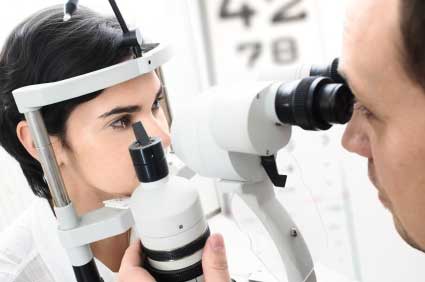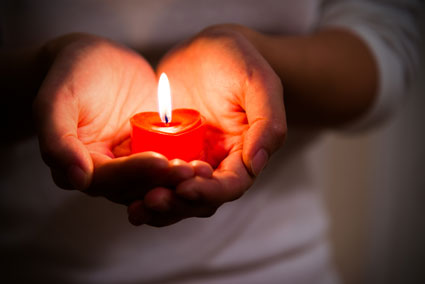Radio Clubs
Many hams belong to at least one radio club if not more. These clubs range widely in size, purpose, and location, and there are clubs for just about every type of specific interest in the world of ham radio.
For beginners, finding a general interest club, or better yet, a club that specifically offers help to newcomers, is probably the best way to go. Clubs can help amateurs through the questions that arise as they become accustomed to ham radio operation.
Finding a club is rather easy. The qrz.com website, which features all things ham radio, has a listing of clubs, as does the arrl.org website, which is the website of the American Radio Relay League. Both can provide individuals with listings of types of clubs and where and when they meet. After that, it's up to the ham to attend a meeting and see if the fit feels right.
To make the most out of a club experience, a ham needs to participate. Hams who introduce themselves and try to make connections with other hams tend to feel more at home in a club. In most clubs, there are many opportunities for involvement, such as volunteering on committees, planning events, maintaining equipment, and getting involved in the club's public services. As new hams become involved, they become more experienced and often end up serving as mentors to new hams in the future.
The ARRL
The oldest continuing ham organization in the world is the American Radio Relay League, or the ARRL. The ARRL has been around since prior to World War I and provides benefits and services to hams in the United States. In addition to the typical benefits of most organizations, such as newsletters, websites, and resources, the ARRL also acts as representation for hams' interests in government affairs; operates the National Traffic System (NTS), which is the world's largest non-governmental radio network; and sponsors activities for hams. The ARRL also assists hams in taking their licensing exams, updating their licenses, and assisting with acquiring call signs. One of the most important ways that the ARRL helps is by organizing emergency communications through its Amateur Emergency Radio Service (AERS) teams.
Specialty Organizations
As ham radio has a multitude of facets, there are a multitude of specialty organizations that deal with almost each facet. Any kind of interest a ham might develop probably has a corresponding organization that provides a forum to swap stories, to deal with challenges, and to exchange tips.
For example, a ham can find clubs that focus on a particular part or type of ham radio, such as operating on a specific band. There are also contest clubs that challenge each other to competitions over the air. DX clubs are for long-distance operators who seek to find connections over great distances or try to find operators in every conceivable area of the globe.
Handi-Hams is one organization that focuses on the needs of persons with disabilities. They help connect people with disabilities to the resources they need to become successful hams. Information is available at handiham.org.
AMSAT is the organization that constructs its own satellites and helps coordinate these satellite launches for ham radio. Hams can operate their own radios through satellite. Hams interested in the organization or membership can go to amsat.org.
The Tucson Amateur Packet Radio (TAPR) organization is responsible for many of the modern digital developments in ham radio. Additionally, these digital developments have also been expanded to beyond the ham radio world. More information can be found at tapr.org.
In the 1930s, there was a growing interest in ham radios by women, and the Young Ladies' Radio League (YLRL) was established. Their website at ylrl.org provides information on activities, travel opportunities, contests, and award programs to promote women's interest in ham radio.
Online Opportunities
Just like most other hobbies today, there is a large presence of ham radio operators and information available online. There are opportunities for communicating with other hams, getting help from mentors, and exchanging ideas, all online.
Various email groups exist where hams can join, and conversations take place over email. Just as with clubs and organizations, there are email groups for all sorts of interests, contests, and abilities. Many hams find it useful to belong to one or a few email lists depending on their needs.
There are also a multitude of websites that cater to the needs and interests of hams. Some of the better ones have news, how-to articles, links to email lists, forums, and other resources. Two of the most respected in ham radio are qrz.com and eham.net.
Conventions and Hamfests
As with most other interests, hams can gather at conventions to meet other hams from around the world and to learn new things. Like ham radio clubs, there are general conventions as well as those for specific interests. Hams can find out about conventions through their clubs and organizations as well as online. Two of the largest general interest conventions are Hamvention, held in Dayton, Ohio, and the International Amateurfunk-Ausstellung in Friedrichshafen, Germany.
Hamfests are like flea markets. They, like conventions, range in size from small affairs in parking lots to large multi-day events. Just as flea markets can have great deals and rip-offs, so can hamfests, so hams are wise to exercise caution.
As difficult or scary as getting a license from the FCC sounds, it's really no more challenging than obtaining other forms of licensing from the government, such as a marriage, driver's or hunting license.
Amateur Radio Service
The Amateur Radio Service is a licensed service, meaning that every country in the world is required to license each ham in order to transmit. Licensing is important because it allows hams to be able to transmit and communicate with other hams across international boundaries directly without intermediate steps, and it also ensures that hams have the requisite technical knowledge so that they can transmit over radio waves successfully among other forms of transmission, such as military and commercial broadcasts.
The FCC also strives to keep quality control on its licensing process because it recognizes the gifts and talents of hams. For example, the FCC knows that hams are excellent at communicating important information in times of emergency, so licensing helps ensure that hams have the proficiency to contribute to that process.
As radio was growing in the early 20th century, the International Telecommunication Union (ITU) was formed in 1932 to attempt to keep order over how the radio spectrum is used. The ITU continues its work today, helping to assign radio wave frequency allocations to new technologies as they emerge, like cell phones.
The ITU has divided the world into three regions. Region 1 includes Europe, Russia, and Africa. Region 2 is North and South America. Region 3 includes Asia (except Russia), Australia, and most of what remains in the Pacific. Then, in each region, specific types of radio services, whether amateur, commercial, or other type, is assigned a share of the available frequencies. Most amateur allocations are the same regardless of the region, which makes international communication possible. Depending on the type of license a ham has affects the range of frequencies that ham is able to use.
License Classes
There are currently three license classes for which a ham can qualify. Once a ham passes a level of a test, called an element, that ham is licensed in that class. The ham can then progress to the next element and obtain a license in the next class. A license is valid for ten years and can be renewed without retaking an exam, similar to how a driver's license is renewed.
There are study guides to help a ham prepare for an exam, including those published by the ARRL, and online practice tests are also available. It's important for hams to be sure that they have the latest version of study materials as changes in technology, rules, and regulations do affect questions asked on the exam.
The Technician, or Tech, class license is where most hams begin. This license allows a ham to use all seventeen ham bands within frequencies of 50 MHz or higher. Additionally, a Tech license allows a ham to transmit Morse code at frequencies of 30 MHz and below that are available to the General class license. While Morse code was, until recently, a part of the licensing examination because of its importance in radio communications, it's still frequently found in ham radio communications.
The General class license allows full access of almost all amateur radio frequencies with the exception of a few bands. The exam for the General class covers the same topics of the Tech class but in more detail. A more experienced ham generally knows this information already. It is a natural upgrade after some experience at the Tech class.
Finally, the Amateur Extra class allows complete access to all amateur radio frequencies. The few frequencies that this class allows are where expert hams enjoy transmitting. This is recommended if a ham plans to engage in contesting or wishes to contact rare foreign stations. The exam is longer and covers additional material than the others. Exam questions include more rules and regulations as well as deeper technological concepts.
There are also three additional licensing classes that are no longer being issued as new licenses, but hams who hold these licenses may still keep them renewed. These grandfathered classes include the Novice class, which was originally valid only for one year, and then the ham was expected to upgrade. This Novice class had fewer privileges than the Tech class. The Technician-Plus class had the same privileges as the Tech class, but these hams demonstrated their ability to transmit Morse code at a minimum of five words per minute. Finally, the Advanced class was nestled in between the General and Amateur Extra classes in both privileges and exam difficulty.
Call Signs
When a ham earns a license, a call sign (or call, as hams refer to it) is also issued. This is a ham's on-air identity. Sometimes, the call is how hams identify each other off the air as well.
A call consists of a mix of letters and numbers, such as KL5CD. These are broken down into the prefix and suffix. The prefix consists of one or two letters and a number. Each prefix is unique to one country although a country may use several prefixes. The ITU allocates these prefixes to countries who then assign call signs for all uses of radio waves. (This is why U.S. broadcast stations have call signs that start with K or W.) The suffix of the call consists of one to three letters. The FCC assigns these call signs based on a ham's license class. The higher the license class, the shorter the call. As with license plates, vanity call signs are also available.
Volunteer Licensing
The FCC directly processes military and commercial licensing, but amateur radio is processed through the Volunteer Examiner Coordinator organization, or VEC. Volunteers handle administering exams and filing results with the FCC, which then issues a license if necessary.
The VEC is an efficient way of working with amateur radio licensing as licenses and calls can be assigned within seven to ten business days of passing an exam. Additionally, it is more flexible for the ham seeking licensing as times and places for taking the exam are more convenient than driving to the closest FCC office. Hams can find their local VEC organization online or through the ARRL or FCC.





















